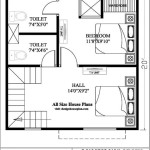How To Get The Building Plans For My House
Obtaining building plans for a house can be a necessity for various reasons, ranging from planning renovations and additions to resolving property disputes or simply satisfying personal curiosity. Accessing these plans requires navigating specific procedures and understanding local regulations. The process can vary depending on the age of the house, its location, and the record-keeping practices of the relevant authorities. The following detailed guide outlines the common methods for acquiring building plans and provides insights into potential challenges and solutions.
Checking with Local Government Agencies
The primary source for obtaining building plans is often the local government agency responsible for building permits and records. This is typically the city, county, or municipal planning department. The specific name of the department may vary (e.g., Department of Building Inspections, Planning and Zoning Department), but its function remains consistent: to oversee construction activities and maintain records of approved building plans. Contacting this agency is the first step in the search process.
Initial contact can be made via phone, email, or in person. During this contact, it is essential to provide the property address and, if possible, the year the house was built. This information will help the agency locate the relevant records more efficiently. Inquiring about the specific procedures for requesting building plans and any associated fees is crucial at this stage. The agency representative will typically explain the required documentation, application forms, and payment methods.
Submitting a formal request is usually required. This request should include a detailed description of the information sought, the property address, and the requester's contact information. Some agencies may require proof of ownership, such as a copy of the property deed or a recent property tax bill. The request may need to be notarized, depending on local regulations. The agency will then process the request, which may involve searching through archives, both physical and digital.
The availability of building plans depends largely on the agency's record-keeping practices. Older houses may have plans that are stored in physical archives, while newer houses are more likely to have digital records. If the plans are available, the agency will typically provide copies, either in paper or digital format. Fees for copying and retrieval may apply. In some cases, the agency may only allow viewing the plans on-site, due to concerns about copyright or the fragility of the documents.
If the local government agency does not have the building plans, they may be able to provide information on where else to look. They may know the architect or builder who originally worked on the house, or they may have information on previous owners who might have the plans.
Contacting the Architect or Builder
If the identity of the architect or builder who originally designed and constructed the house is known, contacting them directly can be a fruitful avenue for obtaining building plans. Architects and builders often retain copies of their projects' plans for their records, even after the project is completed. Reaching out to these professionals may provide access to the original plans or at least offer valuable insights into the house's construction.
Finding the architect or builder may require some detective work. Historical records, older building permits, or even local historical societies can be valuable resources. Online directories and professional associations can also be helpful in locating architects and builders who operated in the area during the relevant time period. If the original architect or builder is no longer in business, contacting their successors or former employees may yield results.
When contacting the architect or builder, it is essential to present the request professionally and clearly state the reason for needing the plans. Providing the property address, the year the house was built, and any other relevant information can help them locate the specific project within their records. It is also prudent to inquire about any fees associated with providing copies of the plans.
Architects and builders are often willing to cooperate, especially if the request is for the purpose of maintaining or improving the property. However, they may have concerns about copyright or liability, so it is important to respect their rights and address any concerns they may have. A written agreement outlining the terms of use for the plans may be necessary to protect both parties.
Even if the architect or builder does not have the original plans, they may be able to provide valuable insights into the house's design and construction. They may recall specific details that are not documented elsewhere, or they may be able to recommend other resources for finding the plans. Their expertise can be invaluable in understanding the house's structural integrity and potential for future modifications.
Exploring Other Potential Sources
Beyond government agencies and the original architect or builder, several other potential sources exist for obtaining building plans. These sources may require more research and effort to access, but they can be fruitful, especially when the primary options have been exhausted.
Title companies often maintain records related to property transactions, including surveys and other documents that may contain information about the house's layout and construction. Contacting the title company that handled the property's original sale or subsequent transactions may provide access to these records. Title searches can also reveal information about previous owners and contractors who worked on the property.
Historical societies and local libraries can be valuable resources for researching the history of a house and its construction. These institutions often have extensive collections of historical documents, photographs, and maps that may contain information about the house's design and construction. Historical societies may also have information about the architects and builders who worked in the area during the relevant time period.
Previous owners of the house may also possess copies of the building plans. Contacting previous owners may require some research, but it can be a worthwhile endeavor. They may have retained the plans for their own records or may have inherited them from previous owners. Real estate agents who have sold the property in the past may also have contact information for previous owners.
Online databases and archives are increasingly becoming valuable resources for finding historical documents and building plans. Websites such as Ancestry.com and FamilySearch.org may contain digitized records that include building permits, property records, and other relevant information. Searching these databases can be time-consuming, but it can also uncover valuable information that is not available elsewhere.
Finally, contacting local contractors and tradespeople who specialize in older houses can be helpful. These professionals often have experience working with houses of a certain age and style, and they may have access to resources and information that are not readily available to the general public. They may also be able to provide insights into the house's construction and potential for future modifications.
Obtaining building plans for a house can be a complex process, but by systematically exploring the available resources and following the appropriate procedures, it is often possible to locate the desired information. Persistence, patience, and a willingness to conduct thorough research are key to success.

How To Find Building Plans For My House Architecture Design Plan

Where You Can Buy House Plans Live Home 3d

Floor Plans Learn How To Design And Plan

Floor Plans Types Symbols Examples

House Plans How To Design Your Home Plan

How To Read A Floor Plan With Dimensions Houseplans Blog Com

Est House Plans To Build Simple With Style Blog Eplans Com

How To Read A Floor Plan With Dimensions Houseplans Blog Com

House Plans How To Design Your Home Plan

Building Plans For Your House My Modern Architects Upwork
Related Posts








